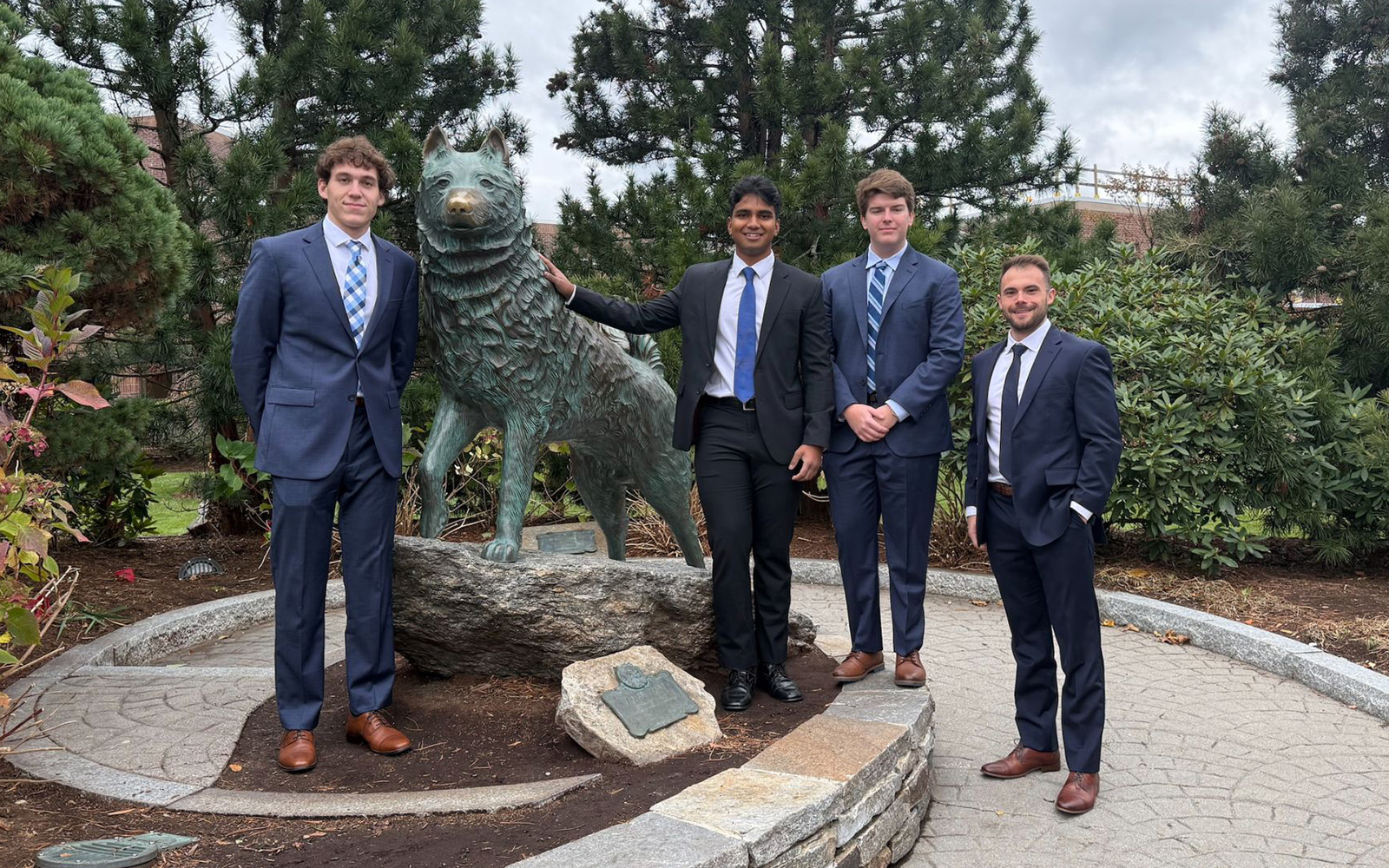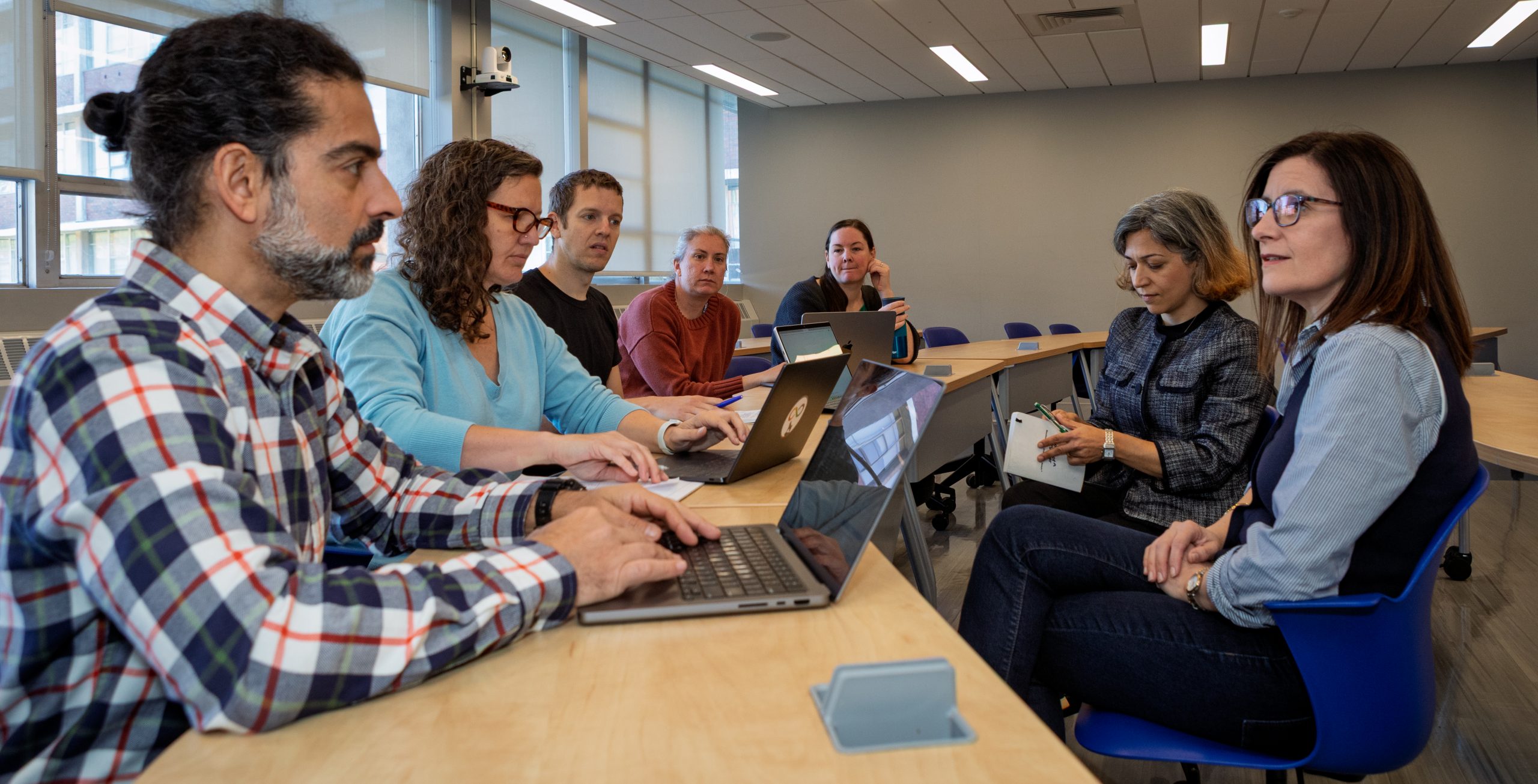
Archaeological digs are usually associated with dry land, or, in some cases, creek or riverbeds. But David Robinson, a Ph.D. student in anthropology and a professional maritime archaeologist, is taking excavations – and student excavators – to new depths.
This summer he participated in the initial fieldwork of a five-year project at Tudsehage, a submerged Stone Age settlement site in Denmark. The site, off Skaelskor, was occupied by humans between 8,500 and 7,500 years ago, as evidenced by food, tools, and other submerged remains.
Underwater archaeological excavation is one of Robinson’s areas of expertise. He says excavating former human settlements that are now submerged is a rich area of research because to date, most archaeological research has ended at the current shoreline.
Robinson anticipates this area of maritime archaeology will expand rapidly in the next decade.
The view that underwater archaeology is too expensive or hard to do is incorrect, he says. The Tudsehage site, for example, is only two to four meters deep, a depth that allows divers to work underwater easily and safely for hours at a time.
Stone Age Finds
The first artifacts found at Tudsehage were located by a skin diver, Per Lotz, in the 1950s, and included stone axes, knife blades, and tools. A brief investigation by Viking Ship Museum staff in 2002 found additional stone and bone tools as well as a fragment of a dugout log boat and a fish trap.

This summer, Robinson and his colleagues found evidence of tool making and food processing, and what may prove to have been the remains of a hearth and a dwelling.
The submerged organic remains of a dwelling from this period “would be a really amazing find, and unique in the archaeological record,” he says.
Organic remains associated with a dwelling are better preserved underwater than on dry land, where they deteriorate rapidly in fluctuating temperature and humidity extremes and in the presence of oxygen. This is part of the reason why submerged sites hold so much research potential and why Robinson is interested in them.
The challenge for maritime archaeologists is to develop effective methods for finding and excavating these sites.
Robinson’s work this summer in Skaelskor was filmed by National Geographic, which is preparing a documentary on the Doggerlands, a submerged paleo-landscape in the southern North Sea that was once exposed land inhabited by humans, plants, and animals. The Tudsehage site was the only such area being excavated this year.
Robinson hopes to take UConn undergraduate students to work there in a study abroad field school.
Work on the site is directed by Jorgen Dencker of the Viking Ship Museum in Roskilde, Denmark, one of the world’s few experts on Stone Age underwater archeology. Dencker is a member of Robinson’s dissertation committee.
Closer to Home
What Robinson learns in Denmark could be applied to underwater areas off the Connecticut coast and could help anthropologists piece together a more complete picture of this area’s early human history.
“I have no doubt there are thousands of submerged sites all up and down the coast,” he says. Around 12,000 years ago, when the first humans arrived here, it would have been possible to walk out to what is now Block Island and further.
Robinson is working on a model for southern New England to predict where submerged sites may be located. To test his model, he collects remote sensing data and core sediment samples that can indicate where relics of the formerly exposed and occupied landscape are preserved intact.
Essential to developing submerged settlements archaeology in this country will be the involvement of Native American partners, because it is their ancestral heritage that is being studied, he says.
Robinson has chaired an international symposium on this subject that brought tribal representatives together with state and federal agencies and other researchers to discuss the issue of cultural sensitivity toward these resources.
“By studying submerged settlements here in southern New England, we have an opportunity to completely rewrite the early human history of the region,” he says, “and answer long-standing questions about coastal adaptation of its earliest settlers, answers that today can only be found underwater.”
Robinson has already taken undergraduates to Sweden to help the Swedish National Maritime Museum document the remains of the 1628 shipwreck Vasa. Students in his maritime archaeology class have also done fieldwork on the wreck site of the 1899 steamboat Aunt Polly in the Connecticut River, and this year, will conduct fieldwork at a submerged settlement site in Rhode Island waters.


